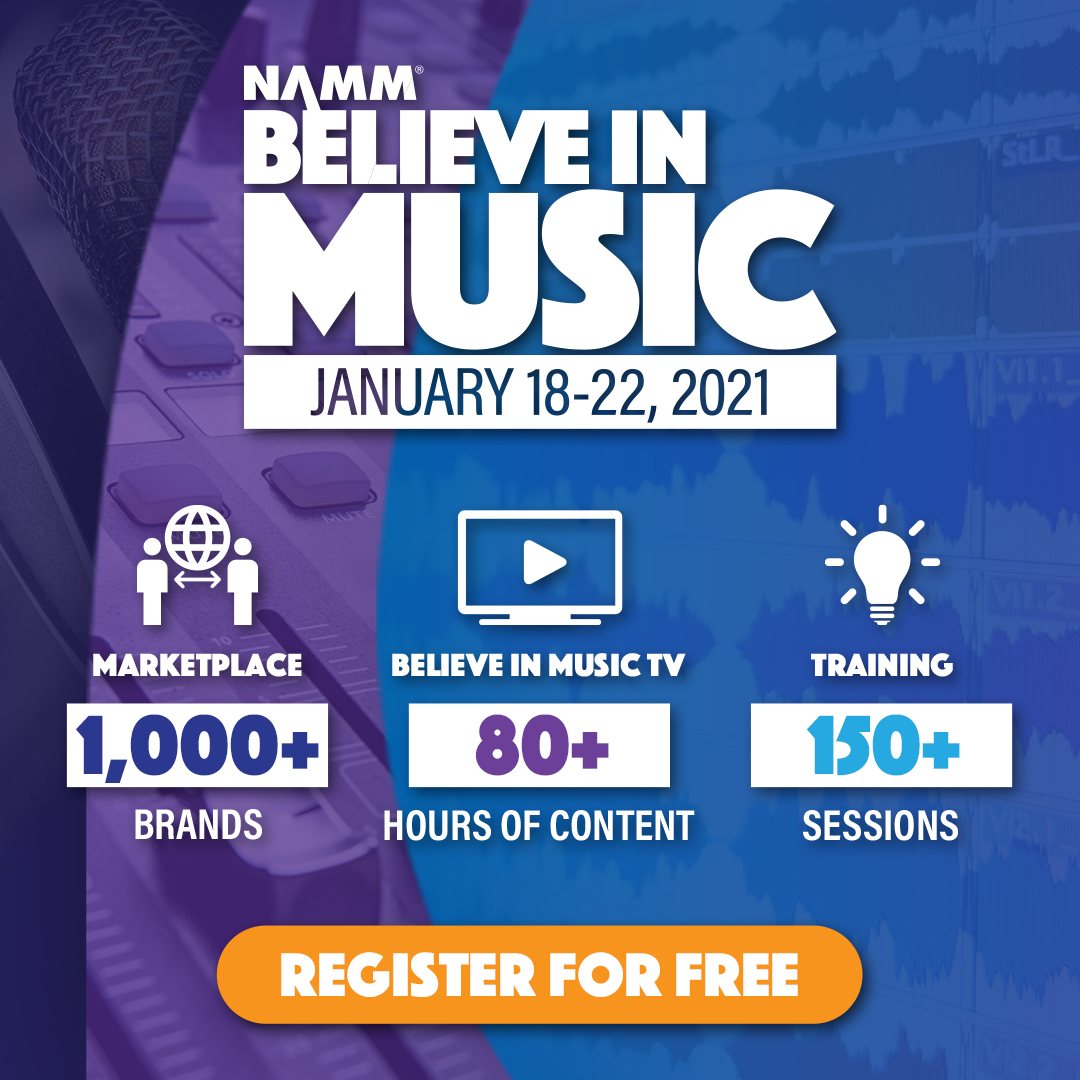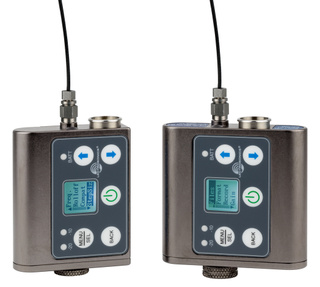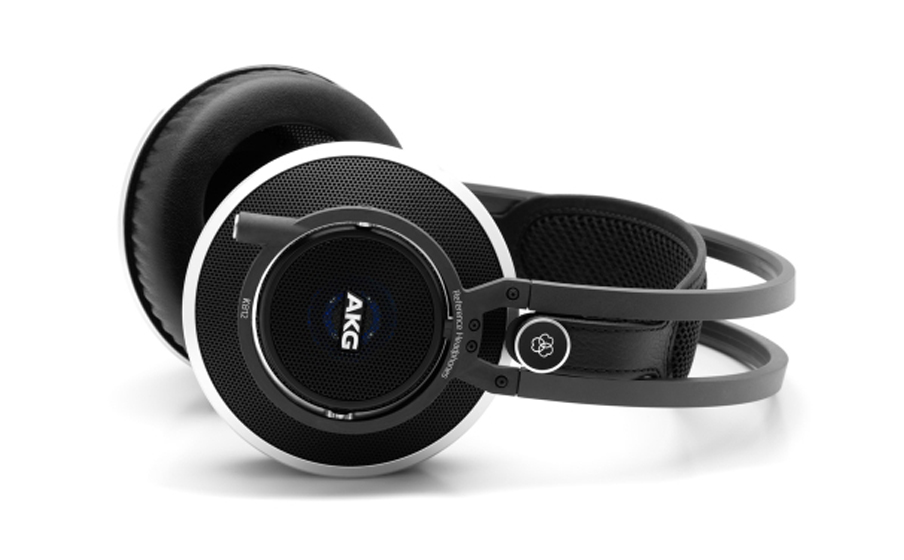NAMM Show Is Virtual, Features Wealth of Pro Audio
Introductions target immersive audio, podcasting, broadcast sports
Story Highlights
Updated Jan. 26, 2021, at 3:15 p.m.
The annual NAMM Show may be virtual this year, but the pro-audio products using it as a launch pad are very real.
 Online this week, the event is produced by the trade organization for the musical-instrument industry, but the National Association of Music Merchants’ expo — which dates back to 1902 and had Thomas Edison as a member and exhibitor — began embracing pro audio several decades ago, focusing on personal-recording technology as the AES’s own annual U.S. conferences saw a steady decline in attendance. That trend was de facto formalized in 2012, when the TEC Awards, which recognize excellence in audio production and products, moved its ceremony to the NAMM Show’s main Anaheim Convention Center venue, conferring pro audio’s imprimatur on NAMM’s foundation of drums and guitars.
Online this week, the event is produced by the trade organization for the musical-instrument industry, but the National Association of Music Merchants’ expo — which dates back to 1902 and had Thomas Edison as a member and exhibitor — began embracing pro audio several decades ago, focusing on personal-recording technology as the AES’s own annual U.S. conferences saw a steady decline in attendance. That trend was de facto formalized in 2012, when the TEC Awards, which recognize excellence in audio production and products, moved its ceremony to the NAMM Show’s main Anaheim Convention Center venue, conferring pro audio’s imprimatur on NAMM’s foundation of drums and guitars.
This year’s TEC Awards ceremony was held, virtually, on Friday, Jan. 22. Among the winners were, in the Wireless Technology category, Shure for its Axient Digital AD3 plug-on wireless transmitter and, for Outstanding Technical Achievement in the Studio Monitors category, Genelec for its W371A Adaptive Woofer System.
(The AES Show co-located with NAB Show New York at the Javits Convention Center from 2017 to 2019; the two events were held virtually in 2020. Both organizations will co-locate their main events this year in Las Vegas: the AES Show will take place at the Westgate Hotel Oct. 11–13, adjacent to the Las Vegas Convention Center, where the NAB Show will be held Oct. 9–13.)
The AES has its own slate of events on the NAMM Show conference program this week, with panels covering how pro audio can best deal with the ongoing pandemic (“Pandemic: Panic or Pivot”), near-field monitoring (“Secrets of Near-Field Monitoring”), and file management (“Organizing Chaos — Top Engineers Discuss File Management”).
The stream of new audio products, including those relevant to broadcast sports, has continued unabated, pandemic notwithstanding. Here are some highlights from the NAMM Show — virtual though it may have been — this week.
Lectrosonics introduced two transmitters as the latest generation in its Digital Hybrid Wireless SM Series product line: the SMWB/E07-941 (single AA battery) and SMDWB/E07-941 (dual AA battery), covering the Part-74 license-only frequency range from 941.525 to 959.825 MHz. The new transmitters have the same dimensions and features as the earlier UHF SMWB and SMDWB units, including the ability to act either as a transmitter or as a body-worn recorder. RF power is selectable at 100, 50, or 25 mW. The transmitters feature the standard TA5 connector with servo-bias mic input used on all previous SM Series units and all current TA5 beltpack units, such as the LT and LMb. Any lavaliere microphones wired for the other Lectrosonics transmitters will also work on these new models. The new units can be configured as either a transmitter or a recorder, with files stored on Micro SD card memory, allowing use as body-worn recorders. Audio files are recorded in the industry-standard Broadcast Wave (.wav) format at 24 bits, 44.1 kHz sample rate. The Micro SD memory card can also be used to update firmware in the field.
Electro-Voice is showing its broadcast-microphone line topped by the RE-20 Variable-D, which was designed to mitigate the proximity effect on speech tonality. Other microphones in the series include the RE27N/D, a high-output, neodymium-equipped voice-production microphone, and the RE320, also equipped with Variable-D proximity control and an integrated humbucking coil and integral pop filters for virtually noiseless performance.
Priced at over $1,000, AKG’s K812 flagship studio headphones are not inexpensive, but they are unique. The K812’s 53-mm transducer is the largest that AKG has ever built. The 1.5-tesla magnet system offers highly accurate imaging, and a copper-covered aluminum voice coil extended frequency response up to 54 kHz.
An Immersive Show
As immersive audio moves closer to reality for broadcast, support in the music sector is also on the rise. Avid has announced it will support independent music distribution in the Dolby Atmos format to streaming services Amazon Music and TIDAL, via Dolby Atmos Music and AvidPlay. Meanwhile, Sony’s 360 Reality Audio uses Sony’s spatial-sound technologies to establish an object-based, immersive-audio system for headphone virtualization. The final mix is encoded in MPEG-H and can be delivered at a bitrate of up to 1.5 Mbps, depending on the streaming service used.
Podcasting, which has become well-entrenched in sports media, is also well-represented at the virtual NAMM Show. Shure’s MV7 microphone was inspired by the SMB7 broadcast mic but has pivoted nicely to podcasting with a USB connection and its Auto Level Mode, part of the ShurePlus MOTIV app, to control vocal tone and distance from the microphone.
See lots more gear here (requires free registration).



